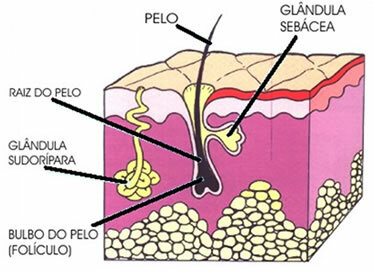When the subject is evolution and population genetics, we cannot fail to mention the Hardy-Weinberg principle, also known as Hardy-Weinberg equilibrium law. Created in 1908 by mathematician Godfrey Hardy and physician Wilhelm Weinberg, the principle emphasizes that if the evolutionary factors, such as natural selection, mutation, migration and genetic oscillation, do not act on a given population, gene frequencies and genotypic proportions will remain constant. This means that if there are, for example, the B and b alleles in a population, they do not change their rates for a long period of time. These rates would only be changed if evolutionary mechanisms occurred.
To demonstrate the Hardy-Weinberg principle, a population must conform to certain premises. First it must be pretty big and present the same number of males and females. Another important point is that all couples must be equally fertile and capable of producing the same number of puppies. All the crosses must occur at random
. Finally, mutations cannot occur in this population, it cannot undergo natural selection, and gene flow cannot occur. It can be seen, therefore, that only a theoretical population can satisfy this principle.We can conclude that the Hardy-Weinberg principle can be used as an indication that a given population has evolved. This can be done by analyzing the frequency of alleles. If the frequency changes, it is a sign that evolutionary factors acted there.
Calculating the frequency of genes and genotypes in a population in Hardy-Weinberg equilibrium is quite simple. Suppose that allele B, which will be represented by p, and allele b, which will be represented by q, exist in a population. The sum of the frequency of these two alleles must equal 100%, therefore:
p+q=1
Continuing with this population as an example, we have the following genotypes: BB, Bb and bb. For an individual to be BB, he must inherit a B allele from the father and a B allele from the mother, so the frequency of this genotype is p.2. Likewise, the frequency of bb is q2. The frequency of Bb is 2pq, since the individual can receive the B allele from the father or the mother and the b allele in the same way. Therefore, we have the following genotype frequencies:
Do not stop now... There's more after the advertising ;)
F(BB)=p2
F(Bb)= 2pq
F(bb) = q2
Below is an example of a question that addresses this topic:
(Fuvest) In a population of 100 people, 36 are affected by a genetic disease conditioned by a pair of autosomal recessive inheritance alleles.
The) Express, in decimal fractions, the frequency of dominant and recessive genes.
B) How many individuals are homozygous?
ç) Suppose that in this population the crosses occur at random, resulting, on average, in an equal number of offspring. Also consider that the characteristic in question does not alter the adaptive value of individuals. Under these conditions, what will be the expected percentage of individuals with the dominant phenotype in the next generation?
Justify your answers by showing how you arrived at the numerical results.
Resolution:
The) If a population has 100 people and 36 are affected by an autosomal recessive disease, we have 36% affected, or 0.36. 0.36 corresponds to q2. So q is equal to 0.6. Since p+q=1, we have that p is equal to 0.4.
B) Homozygous individuals are individuals with the AA and aa genotype. Therefore, we have:
F(AA)+ F(aa) = (0.6)2+ (0,4)2
F(AA)+ F(aa) = 0.36 +0.16 = 0.52 or 52 individuals.
ç) Individuals with a dominant phenotype are those with Aa and Aa genotypes. Obeying the Hardy-Weinberg principle, the frequency of alleles must remain constant. Thus, the frequency of genotypes will be the same in the subsequent generation. Therefore, we have:
F(AA) + F(Aa) = p2+ 2 because
F(AA)+ F(Aa) = (0.4)2 + 2(0,4.0,6) = 0,64
By Ma. Vanessa dos Santos


